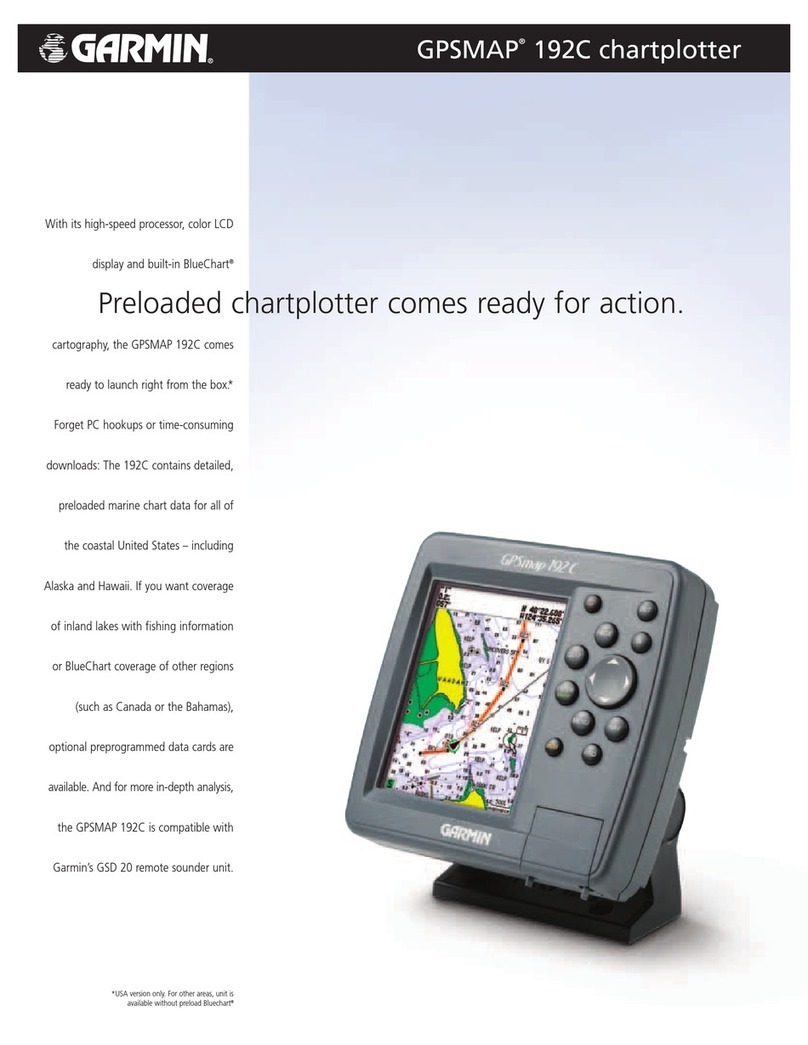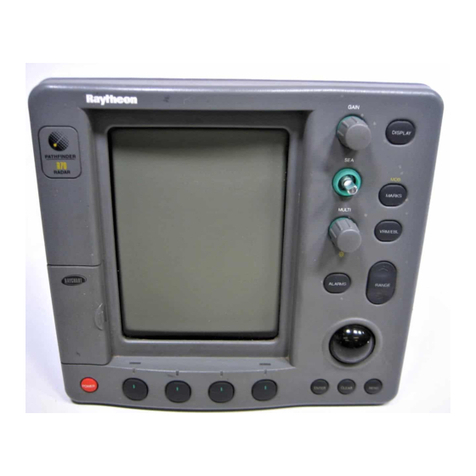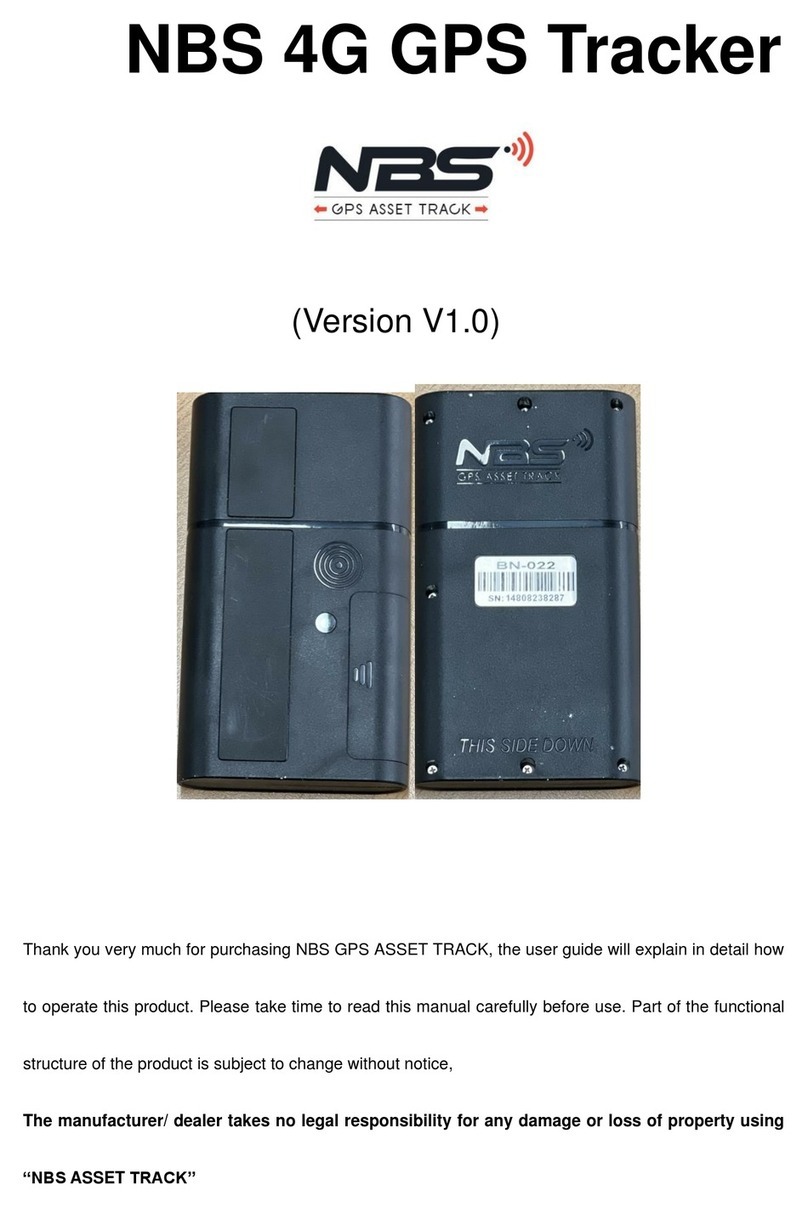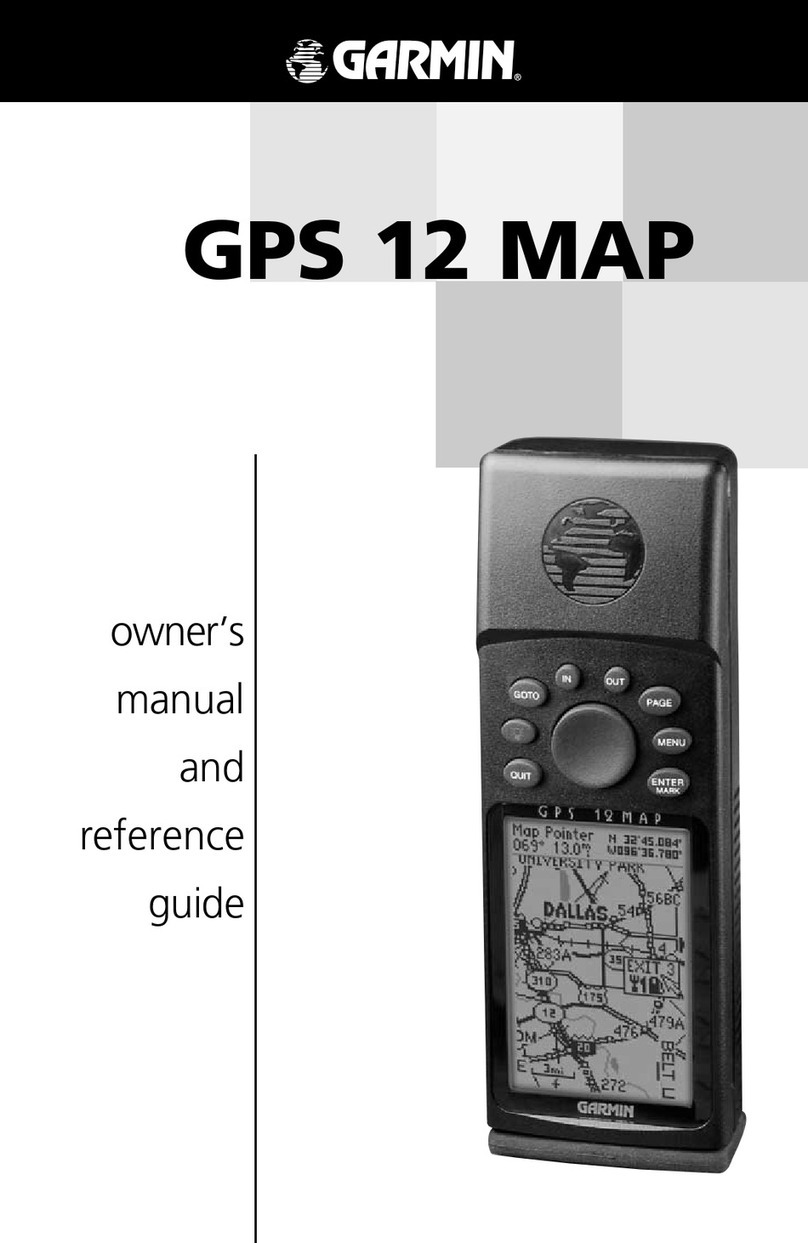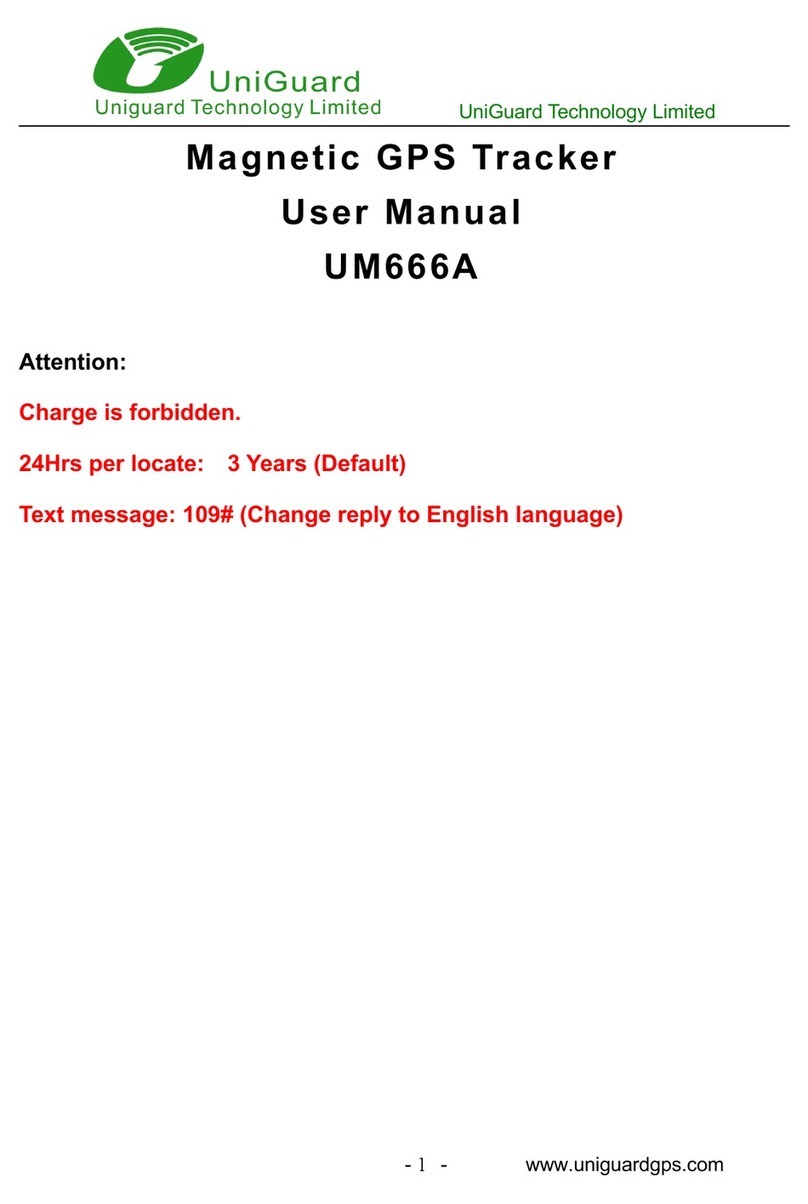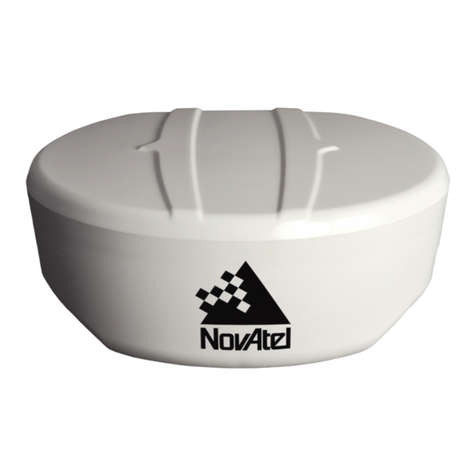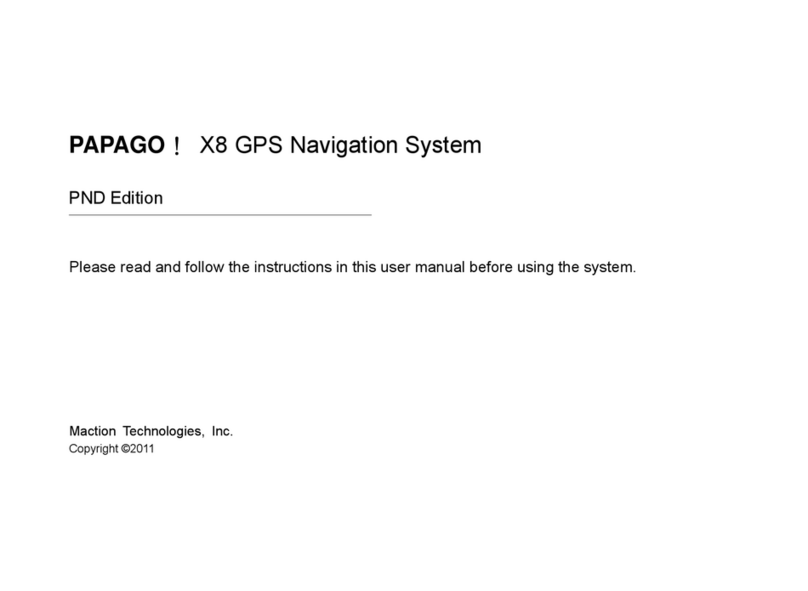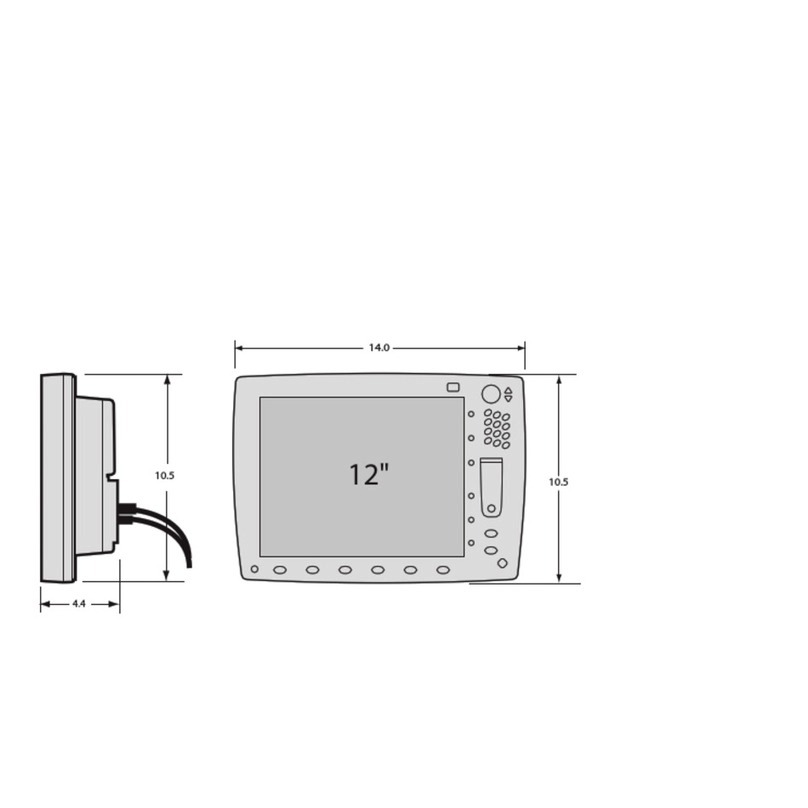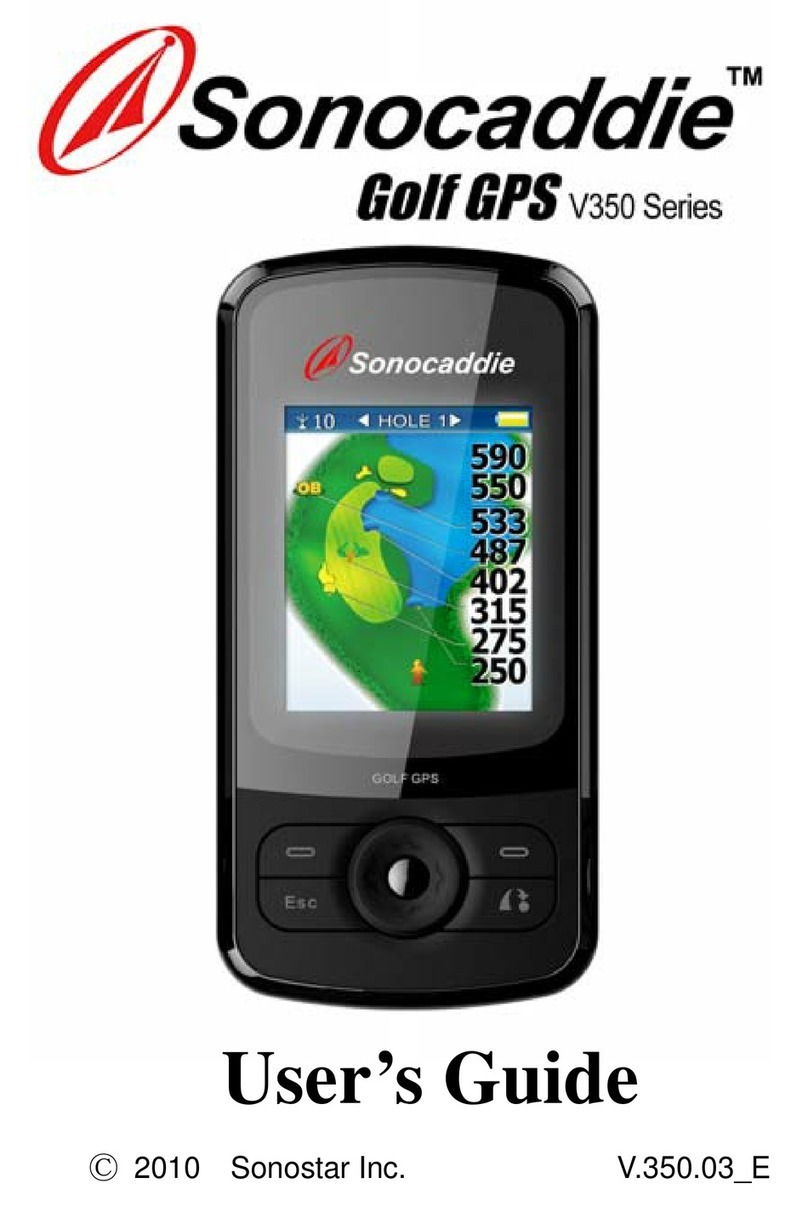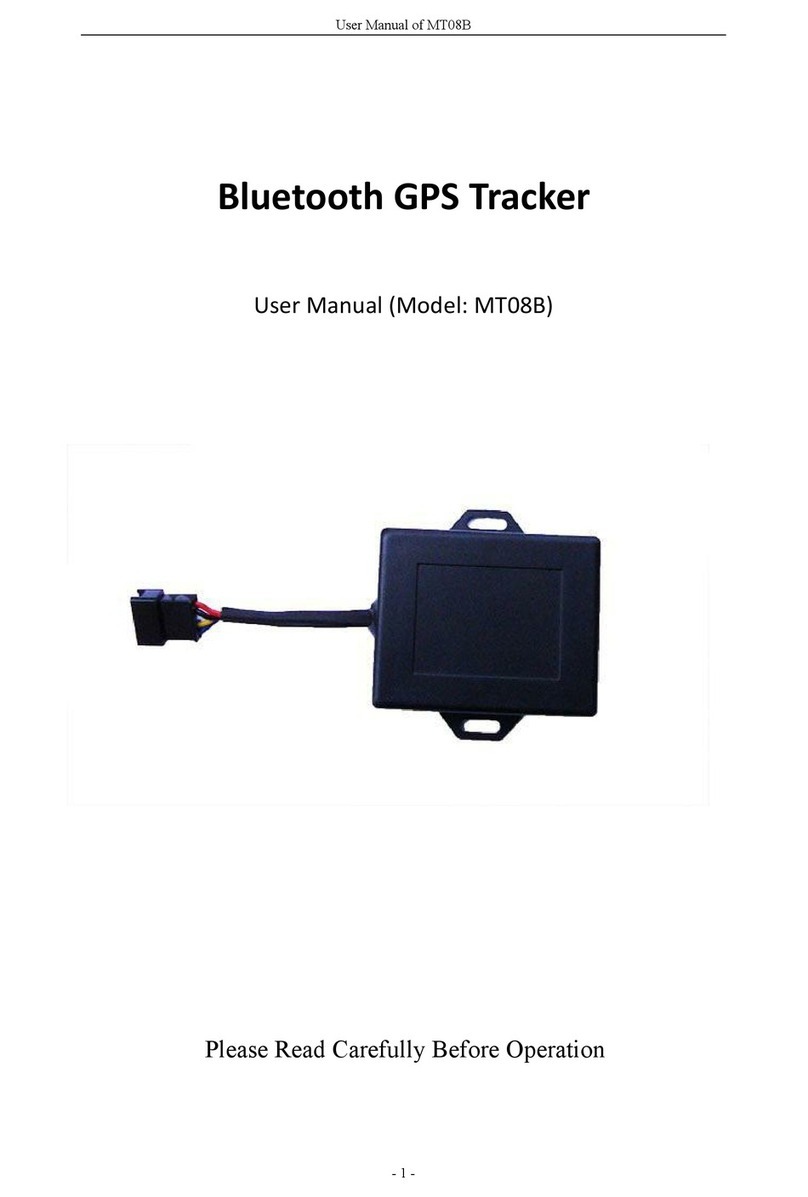Skookum SK-GPS User manual

SK-GPS
Instruction Manual
Rev. 1.10 – August 1, 2014

©Skookum Robotics Ltd.
Ta le of Contents
Safety .......................................................................................................................................................................................................... 1
Box Contents............................................................................................................................................................................................... 2
Getting Started............................................................................................................................................................................................ 3
SK GPS Internal Blue LED States ............................................................................................................................................................. 3
Swash Bump at Init ................................................................................................................................................................................. 3
Mounting the SK GPS.................................................................................................................................................................................. 4
Connecting the SK GPS ............................................................................................................................................................................... 7
Connecting the Superbright EX LED............................................................................................................................................................ 8
Configuring the SK GPS Using the PC Interface .......................................................................................................................................... 9
GPS Responses (Functions)................................................................................................................................................................... 11
Calibrating (Swinging) the Compass ......................................................................................................................................................... 17
Using the SK GPS....................................................................................................................................................................................... 19
Warranty and Technical Support.............................................................................................................................................................. 21

©2014 Skookum Robotics Ltd. 1
Safety
An R/C helicopter is not a toy and can cause serious injury to people or damage to property. Use of this gyro places a flight control
computer (the SK720) between the radio receiver and the servos that position the helicopter’s controls. Loss of control of the
helicopter may result if the SK720 is mistuned or set up incorrectly. See the Warranty and Technical Support section for warranty
information.
WARNING: Stand clear! Always test fly in an area away from spectators and keep yourself at a safe distance when flying the
helicopter, especially after any change in the gyro’s setup or tuning. DO NOT stand closer than 10m (30 feet) from the helicopter
during test hovers or any other flying. Keep bystanders clear of the flight area at all times.
WARNING: Always “safe” the motor before you use the PC setup software or SK LCD terminal to set up or tune your SK 720.
Basic safety practice is to kill the engine on a nitro RC helicopter or disconnect the motor or main battery on an electric RC helicopter
whenever the heli is behind the flight line or is being adjusted in any way.

©2014 Skookum Robotics Ltd. 2
Box Contents
The SK GPS includes:
• The SK GPS unit
• Anti vibration kit for the SK 720
• Tri color super bright External LED
• Two 4 pin connecting cables
• Mounting tape for the SK GPS
Figure 1 - The SK-GPS Module, LED and connecting cables

©2014 Skookum Robotics Ltd. 3
Getting Started
The SK GPS uses the same setup software as the SK 720. However, you will need to upgrade the setup software and SK 720
firmware to the latest versions (3.30 software, 3.30 firmware as of Feb, 2013) in order to set up and use the GPS module.
SK-GPS Internal Blue LED States
There are five (5) LED indicator states for the SK GPS. These states are shown in the table below:
Figure 2 - SK-GPS LED Patterns
LED State Mode
Solid Good satellite lock
Slow Flash Searching for satellite lock
Fast Flash Error
Short Single Blinks Compass swing mode, Yaw
Short Dou le Blinks Compass swing mode, Nose Up
A demonstration of the different LED states can be found on our Youtube channel
(http://www.youtube.com/user/SkookumRobotics)
Swash Bump at Init
Normally, when the SK 720 finishes initializing it will “bump” the swashplate up and down to show it’s ready to fly. If the SK GPS is
connected, the swash bump will not happen until the SK GPS also has a satellite lock.
If your heli is a multicopter, the SK 720 will instead give two very short pulses of all the motors.

©2014 Skookum Robotics Ltd. 4
Mounting the SK-GPS
The SK GPS can be mounting in four different configurations. In all configurations the module’s antenna (the black dome) must
point upwards in order to receive a good signal. It should also have a clear view of as much of the sky as possible, without carbon
fibre or metal covering it or directly beside it. Plastic or thin fibreglass canopies are normally ok.
The GPS module must also be mounted 90° to the helicopter’s frame, aligned with the main shaft, with its back parallel to the tail
boom. As a result, the SK GPS can be mounted label-left, label-right, label-front, and label-aft. The diagram below displays an
example of each mounting position on both a single rotor helicopter.
If you mount your GPS module on your heli’s tail boom, make sure to position it no more than half way to the tail assembly. If you
mount the GPS module away from the helicopter’s centre of gravity, be sure to change the Offset setting in the software. An
explanation of the Offset setting can be found in the Configuring the SK-GPS section.
Figure 3 - SK-GPS Mounting Positions

©2014 Skookum Robotics Ltd. 5
Figure - Antenna Configuration

©2014 Skookum Robotics Ltd. 6
The 3 axis magnetic compass built into the SK GPS is sensitive to some of the magnetic components on helicopters. Specifically, the
SK GPS should be mounted at least:
• 10cm (4”) from ESCs
• 15cm (6”) from motors
• 5cm (2”) from servos
The cable for the GPS should also be at least 3cm (1”) from motor or battery wires, and should be at least 1cm (0.5”) from servo
wiring. It is OK for the GPS wire to cross servo wiring at 90 degrees.
When mounting the GPS unit, it may help to watch the Magnetic Field Strength display on the GPS form in the setup software. Aim
for a mounting location with a field strength under 2. Note that often bolts can be strongly magnetized, so replacing them with
stainless steel bolts may help.
The location of the GPS unit’s magnetic sensor is shown in the image on the left, on the
upper right corner of the unit. The sensor itself is on the underside of the circuit board.
The metal ring included with the GPS cable is a ferrite bead, not a magnet. This ring
reduces high frequency electronic noise. Other tips for reducing EMF and electronic noise
include:
• If cables have to cross, they should cross at 90°
• Don’t run ESC or main battery wires near servo cables, the SK GPS, or its cable
• Don’t run any other wire in parallel with the GPS cable
• Avoid mounting near magnets or bolts (any steel bolt can be considered a magnet)

©2014 Skookum Robotics Ltd. 7
Connecting the SK-GPS
The SK GPS module connects to the SK 720s GPS port using the included 4 pin cable. The second port on the SK GPS module is used
for future Skookum accessories.
Figure 5 - Connecting the SK-GPS to the SK-720

©2014 Skookum Robotics Ltd. 8
Connecting the Super right EX-LED
The SK GPS comes with a super bright tricolor version of the SK EX LED (Red / Green / Blue). It has one 3 wire jumper that connects
to the SK 720’s EX LED port, and a standard power cable that can be connected to any 5 to 8 volt source.
Figure 6 – Connecting the SK-LED2
All except blue SK 720's with a "Traditional Receiver"
Only blue SK 720’s with a “Traditional Receiver”
Figure 7 – SK-LED2 Patterns
LED State Mode
Solid Red Initializing
Solid Green Ready for normal flight (GPS not availa le)
Solid Blue Ready for GPS assisted flight
Flashing Blue / Green GPS has primary control of Heli
Green with Red flicker Vi ration Alarm
WARNING: DO NOT look directly at the Tricolor EX LED. It is extremely bright and only intended for use while flying the heli.

©2014 Skookum Robotics Ltd. 9
Configuring the SK-GPS Using the PC Interface
The interface used for setting up the GPS module is launched from the Utility menu of the setup software, under Setup GPS. The
upper half of the GPS interface displays the live data from the GPS. This data can be used for general reference, and to double check
position and compass data when desired. The lower half of the interface sets the orientation and functions of the GPs module.
1. GPS Orientation
The direction the GPS unit’s label faces. Details regarding mounting the SK GPS
can be found on page 4.
2. Fore-Aft Offset
This is the distance of your GPS module from the helicopters centre of gravity
(COG). On a single rotor heli, the COG will be the main rotor shaft. On a
multirotor heli, the COG will be the balance point. If the GPS is behind the
main rotor shaft, this should be negative.
3. Scale Heli
Click this box if you have a single rotor helicopter that hovers at or around mid
stick on the collective.
4.a. GPS Control Switch 1 Position 1 Mode
This box selects the GPS function for the middle switch position (for 3 position switches) on the Tx channel that you selected GPS
switch 2 in the “Control” tab on the main setup software window. This switch mode is not supported on 2 position switches.
4.b. GPS Control Switch 1 Position 2 Mode
This box selects the GPS function for the lo er/do n switch position (for 2 and 3 position switches) on the Tx channel that you
selected in the “Control” tab on the main setup software window.
ote: The top/up switch position on all GPS control switches is “Manual” or “Off” mode. No GPS functions are enabled when the
switch is in the top/up position. Reverse the channel in your transmitter if you prefer the lo er/do n position to be off.

©2014 Skookum Robotics Ltd. 10
5.a. GPS Control Switch 2 Position 1 Mode
This box selects the GPS function for the middle switch position (for 3 position
switches) on the Tx channel that you selected for GPS switch 2 in the “Control”
tab on the main setup software window. This switch mode is not supported on
2 position switches.
5.b. GPS Control Switch 2 Position 2 Mode
This box selects the GPS function for the lo er/do n switch position (for 2 and
3 position switches) on the Tx channel that you selected in the “Control” tab
on the main setup software window.
ote: The top/up switch position on all GPS control switches is “Manual” or
“Off” mode. No GPS functions are enabled when the switch is in the top/up
position. Reverse the channel in your transmitter if you prefer the lo er/do n
position to be the off position.
6. Altitude Floor
The altitude floor sets the level where the SK GPS will bail the heli out. The lowest setting for the altitude floor is 8m (25 ft),
however we recommend setting it to at least 10m (30ft).
7. Alt Hold Gain
Altitude Hold Gain is similar to the Cyclic and Tail gain you set in your SK 720. While the cyclic and tail gains set how hard the SK 720
will try to control your heli in aileron, elevator and rudder, the Altitude Hold Gains set how hard the SK GPS tries to control the
collective.
Set the altitude Hold Gain the same way as you would the Tail or Cyclic. Increase the gain until the heli oscillates, then back the gain
down until the oscillation stops. Cyclic and Tail gains for GPS control do not need to be adjusted for different helis.

©2014 Skookum Robotics Ltd. 11
GPS Responses (Functions)
The SK GPS has nine available flight modes. Any two of the modes can be set to a three position switch on the transmitter. One
position on the switch will always set the GPS to “manual” control to give full control back to the pilot. We strongly suggest that
your first flight test ith the GPS system should be ith Position or Altitude hold modes.
If you have two channels available, you can use two GPS control switches, allowing four active GPS aided modes. Note that switch 1
will always be dominant over switch 2. So if you select a GPS mode on switch 1, switch 2 will be ignored.
Home Positions ote:
Each GPS switch can also have its own “home” position and direction, which is used for the Go Home, Grid, Radial, and Point modes.
Both home positions and directions are initially set the first time throttle is raised.
You can re set the home position of a GPS control switch by toggling the switch from “manual” to position 1, then back to manual, 5
times quickly. The system will tell you that switch’s home position has been re set by slowly flashing blue on the superbright LED.
Altitude Control ote:
The collective stick position controls altitude in all GPS control modes except for go home or rescue modes. So it must be set to
“zero climb” when you enable the GPS control mode. Otherwise, the altitude will slew down or up depending on the transmitter
stick position. The system will hold altitude for up to 2 seconds before it responds to the stick position.
If you are flying a multicopter, or have selected “Scale Heli” on the GPS setup form, “zero climb” is at center stick, so be sure that the
collective is centred while in any GPS control mode (except go home or rescue). For other helis, the hold altitude position is at
about +1/3 positive stick (near the normal hover stick position for a 3D heli).
Aileron/Elevator Control ote:
While in most GPS control modes, you can slew the heli around using the cyclic stick (aileron/elevator). There is a deadband near
the center, so small stick movements will not change the set position. Do not make large stick movements, because 50% stick travel
will give full speed, and more will be ignored. This is to prevent upsets if the GPS system loses its position fix and drops to manual
mode.

©2014 Skookum Robotics Ltd. 12
Position Hold
Setting the GPS to Position Hold will cause the SK720 to automatically hover the helicopter at one
position. While in this mode, control inputs from the transmitter are interpreted as “slew” commands.
Up/down collective slews the helicopter position up and down while the cyclic slews the helicopter’s
position set point in the direction of the cyclic control input, as illustrated at right. Yaw (rudder) control
will still work normally while in position hold.
Altitude Hold Only
Setting the GPS to Altitude Hold Only will take collective control away from the pilot. Up/down collective
commands from the transmitter will slew the altitude set point up and down. Cyclic and tail control will work normally.
Rescue Modes
The SK GPS has three different rescue modes. All will stop the heli’s motion, level it out, and orient it tail in (tail towards you). The
difference between the three modes lies in when the SK GPS bails the heli out. Once the heli is stopped level and above the altitude
floor it will go back in position hold mode until you reset by going back to manual mode. The tail in direction is set when the SK GPS
first gets its satellite lock.
Rescue ow
This version of the SK GPS’ rescue functions allows you to fly normally until you flip the switch to trigger rescue mode.
Rescue Hard Floor
This version of the SK GPS’ rescue functions allows you to fly normally until you go below the set minimum altitude. Once the
minimum altitude is reached, the SK GPS will stop the heli’s descent and go into rescue mode (described on the page above).
Rescue Soft Floor
The ‘soft floor’ rescue bails your heli out at or before it reaches the set minimum altitude. In this mode, the SK GPS will
calculate how much distance is needed to stop in time, and will activate rescue mode if it thinks it is running out of room to
recover before going below the floor. This allows you to set the rescue floor lower, however it gives less control to the pilot.

©2014 Skookum Robotics Ltd. 13
Lock Grid
Setting the GPS to Lock Grid will cause the SK720 to automatically hover the helicopter at one
position. While in this mode, control inputs from the transmitter are interpreted as “slew”
commands. Up/down collective slews the helicopter position up and down, and cyclic slews the
helicopter’s position in the direction of the cyclic control input, as illustrated at right.
This mode differs from normal position hold mode in that cyclic commands slew the helicopter’s
position the same direction, no matter which direction the nose is pointed. So for example if you first
throttled up with the nose pointed away from you, then left cyclic moves the helicopter to your left,
regardless of which way the nose is pointing.

©2014 Skookum Robotics Ltd. 14
Lock Radial
Setting the GPS to Lock Radial will cause the SK720 to automatically hover the helicopter at one position. While in this mode, control
inputs from the transmitter are interpreted as “slew” commands. Up/down collective slews the helicopter position up and down
while the cyclic slews the helicopter’s position set point in the direction of the cyclic control input, as illustrated below.
This mode differs from normal position hold mode in that left/right cyclic commands slew the helicopter’s position in a circle about
the home position and fore/aft cyclic slews the helicopter’s position away or towards the home position. Similar to the “Lock grid”
mode, the helicopter slews the same direction, no matter which way the nose is pointed.

©2014 Skookum Robotics Ltd. 15
Lock Point
Setting the GPS to Lock Point will cause the SK720 to automatically hover the helicopter at one position. While in this mode, control
inputs from the transmitter are interpreted as “slew” commands. Up/down collective slews the helicopter position up and down
while the cyclic slews the helicopter’s position set point in the direction of the cyclic control input, as illustrated below.
This mode differs from normal position hold mode in that left/right cyclic commands slew the helicopter’s position in a circle about
the home position and fore/aft cyclic slews the helicopter’s away or towards the home position. While in this mode, the SK720
controls the helicopter’s heading so that it always points nose in towards the home position

©2014 Skookum Robotics Ltd. 16
Return Home
Selecting the GPS to Return Home mode will take all control away from the pilot. The
helicopter will climb in altitude, fly the heli back to a predetermined ‘home’ position then
descend to the ‘fail safe’ altitude. It will then orient the heli tail in and hover above the home
position. Due to safety concerns, the SK GPS will not land a heli automatically.
The home location must be set before Return Home mode will work. The home position is set
when the throttle is first increased after the GPS external LED turns solid blue. The home
position can be reset to a new position (one position for each GPS mode switch) after the
initial home position has been set. Do this by quickly toggling a GPS mode switch on and off
five times.
NOTE 1: Please make sure your home position is a safe distance from other pilots or spectators. Stored home positions are not saved
between flights. The home position location is deleted when the power is turned off.
NOTE 2: As of firmware release 4.0, fail safe return home after receiver signal loss will only work for multicopters.

©2014 Skookum Robotics Ltd. 17
Cali rating (Swinging) the Compass
Swinging the SK GPS’ 3 axis magnetic compass allows the SK GPS to learn the local magnetic field
distortion caused by your helicopter. You do not have to swing the compass every time you fly the SK
GPS. You do need to swing the compass when you:
• Have moved the GPS module to a different helicopter
• Have mounted the GPS module on a different location on your helicopter
• Are using the GPS with a different SK 720
• Have changed any major equipment on your helicopter, such a servos, ESCs or motors.
To swing the compass, the heli needs to be rotated in yaw (rudder axis) and then pitch (elevator axis).
This should be done outdoors, at least 10m away from power lines, cars, or large metal objects or
concrete pads that may contain rebar. You should also remove your wristwatch and any keys from your
pockets (think airport security). The swing is completed in 7 steps:
1. In the Utility menu, select S ing SK-GPS Compass.
2. Power the SK 720 and GPS. You can do this with your main flight pack, but be sure to
disconnect motor wires for safety. We recommend, especially with multirotors, powering
the SK 720 and GPS with a BEC. Your transmitter doesn’t need to be on.
3. Wait for the SK 720’s LED to turn green, and the SK GPS to show blue.
4. Hold the heli in a level attitude and start rotating slowly as shown in the top image at left.
The SK GPS’ LED will give short single blinks to show that it is in compass swing mode. You
can rotate left or right, and the rotations should take about 10 seconds each. Turn around
until the SK GPS’ LED blink pattern changes to a short double blink, normally 2 turns.
5. Tumble the heli on its pitch axis, taking care not to wobble the heli in the roll and yaw axes.
You can rotate nose up or nose down during this phase of the swing. Like the horizontal
swing, this should take about 10 seconds per rotation. Keep tumbling the helicopter (see

©2014 Skookum Robotics Ltd. 18
image on the previous page) until the SK GPS’ LED blink pattern changes to slow blinking or a steady blue. Normally it
takes only 1 2 rotations.
6. Place the heli back on the ground, and wait 10 seconds. You can check the status of your compass swing by connecting
the helicopter to a computer to view the “Setup GPS” window in the setup software.
7. If the compass was swung properly, the LED will have returned to the solid “good satellite lock” LED. A fast flashing
SK GPS LED means that the compass swing failed.
Any failure related to swinging the compass will shut down GPS functions. Compass swing failures include:
• Compass not done at all
• Changed GPS orientation
• Failed compass swing
Compass swing related failures are indicated by an “Invalid Compass S ing” warning in the GUI’s setup window, or an error flash
from the GPS unit itself.
Table of contents
